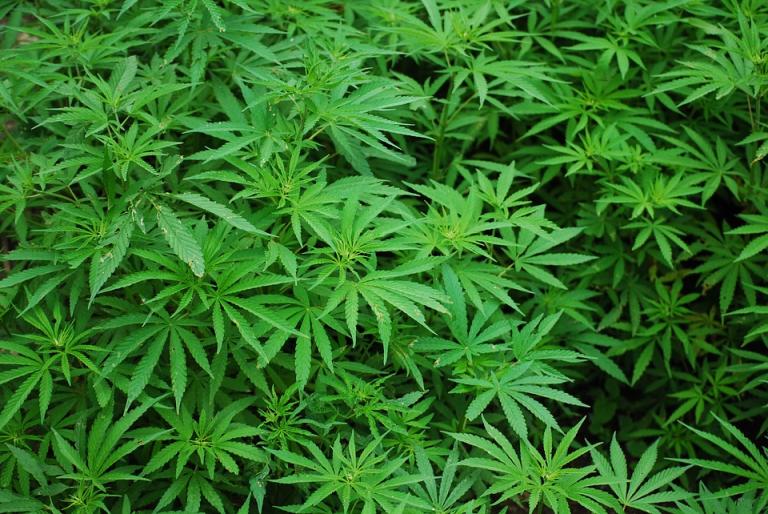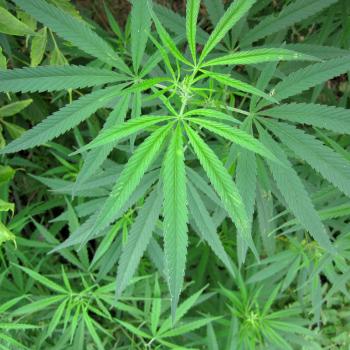
First, some marijuana-use statistics, from a 2017 Marist poll, as featured originally in a Washington Post article:
When asked by phone about pot use, 52% of American adults reported having tried pot. 22% report that they are “current” users (within last year). 14% describe themselves as “regular” users (within last month).
Of current and regular users, 52% are Millennials (defined here as 18 – 34 years old). (Yes, the same prevalence is true of each category). Or, put another way,
33% of Millennials are yearly users, and
21% of Millennials are monthly users.
Are these statistics something to be concerned about? Is this no different than the fondness many young adults have for going out to bars and getting drunk, something they grow out of in time? Proponents of pot say that getting high is better than getting drunk; after all, there’s no stereotype the equivalent to an “angry drunk” and someone who’s high is less likely to take the wheel than someone who’s drunk. There’s also an active push for people who would otherwise be abusing (or just using, that is, medically, for pain treatment) opioids to switch to using pot (this was just approved in Illinois, for example, though studies on its effectiveness are not conclusive).
But consider that, with respect to alcohol, however prevalent binge drinking may be in practice, there is general societal disapproval. Even alcohol manufacturers are obliged to add to their advertising the admonition to “drink responsibly” and to state that, of course, they do not intend for their products to be used to the point of drunkenness, but rather simply for the purpose of enjoying the taste of the beverage. And, of course, as I write this in September 2018, Brett Kavanaugh is being criticized for his drinking habits as a teen and young adult, with significant numbers of those opposing him considering it a given that the alcohol-heavy parties of those years are enough to remove credibility from his denials of sexual assault.
What we’re seeing with pot is quite the opposite. The drive towards decriminalizing pot was originally about “harm reduction” and concerns that young black men were being incarcerated at high rates, and that this was doing a great deal of harm to them and their communities. What we’re seeing now is something far beyond decriminalization and far beyond “harm reduction” (as exists, for instance, in the Netherlands, where pot is decriminalized but receives strong societal disapproval) to active normalization and commercialization. It’s being treated as the next big growth industry; according to a Forbes article, North American sales are projected to increase from $9.2 billion in 2017 to $47.3 billion a decade later, and, separately, a marijuana trade group forecasts sales of as much as $15 billion in recreational pot by 2022, a tripling of current numbers. That’s massive. To be sure, their statistics don’t attempt to determine to what extent forecast sales are based on existing users switching to legal sources but it’s hard to believe that all we’re seeing here is a matter of users coming out of the shadows, especially when the marketing of pot is the new hot career move and when companies are working at branding their products, and recruiting celebrities. One suspects that underlying their marketing studies are projections of growth in their user base that they don’t want to broadcast to the rest of us.
But it’s all based on a narrative that pot supporters are telling the rest of us: people who are predestined to misuse substances will do so one way or another; that’s a fixed percentage of a population, absent some unusual situation such as the current opioid crisis. Everyone else can be relied on to add pot consumption to their spare-time recreational activities, enjoyed in moderation, in terms of frequency, even if the act of getting high isn’t something that can be done moderately, and with no ill-effects in terms of their ability to manage their personal lives, employment, and so forth. If people can add some pot-smoking enjoyment to their lives as an occasional spare-time activity, you’ve improved the overall quality of life of Americans, boosted the economy, and remedied high incarceration rates.
But there’s a counter-example: qat. It’s ubiquitous in places like Yemen. According to an Economist article from earlier this year, it’s a key contributor to the hunger crisis in that country: 90% of men chew qat, and a third of women. And
Men spend far more feeding their addiction than their families: sometimes $800 a month. Rather than searching for weapons and other contraband, soldiers extort bribes at checkpoints to pay for their habit, jacking up transport costs. And while the country runs out of basics, such as wheat, its best farmland is devoted to producing the crop, which is more lucrative. Cultivation of qat is said to be increasing by 12% a year.
Officials refer to it as Yemen’s Viagra and encourage its use. Taher Ali al-Auqaili, the army’s chief of staff, says it is “our whisky” and claims it gives his men strength to fight (see article). Both sides feed it to their child soldiers.
What’s more, in a country which is forecast to be on its way to using up its entire water supply (which comes from aquifers rather than from rivers or lakes), qat is a primary culprit. Here’s Wikipedia, distilling multiple sources:
Khat is so popular in Yemen that its cultivation consumes much of the country’s agricultural resources. An estimated 40% of the country’s water supply goes towards irrigating it, with production increasing by about 10% to 15% every year. One “daily bag” of khat requires an estimated 500 litres (130 US gal) of water to produce. Water consumption is high and groundwater levels in the Sanaa basin are diminishing, so government officials have proposed relocating large portions of the population of Sana’a to the coast of the Red Sea.
One reason for khat being cultivated in Yemen so widely is the high income it provides for farmers. Some studies done in 2001 estimated that the income from cultivating khat was about 2.5 million Yemeni rials per hectare, while fruits brought only 0.57 million rials per hectare. Between 1970 and 2000, the area on which khat was cultivated was estimated to have grown from 8,000 to 103,000 hectares. In 2000, according to a World Bank estimate, khat accounted for 30% of Yemen’s economy.
Now, in an ordinary state of affairs, it’s not unheard of for a cash crop to dominate a country’s agriculture, even if it needs to import other foodstuffs, but Wikipedia separately links to sources stating that the country is at risk of simply running out of water.
So to what degree persistent qat/khat usage keeps Yemenis in poverty (even notwithstanding the current civil war) and puts their very existence in peril, I can’t say. But it’s clearly a problem, and it suggests strongly to me that there’s no “natural” level at which a society will level off its consumption of such substances, and that we don’t really know what the long-term effect of normalizing pot will be.
Image: from pixabay.com; https://pixabay.com/en/foliage-cannabis-marijuana-lush-1157792/










